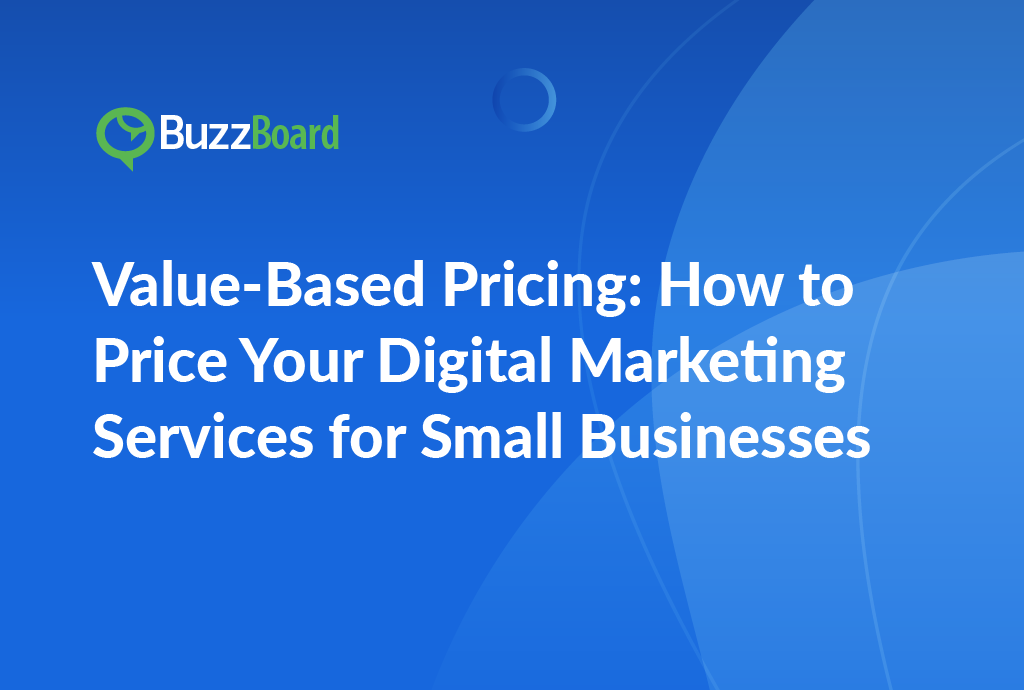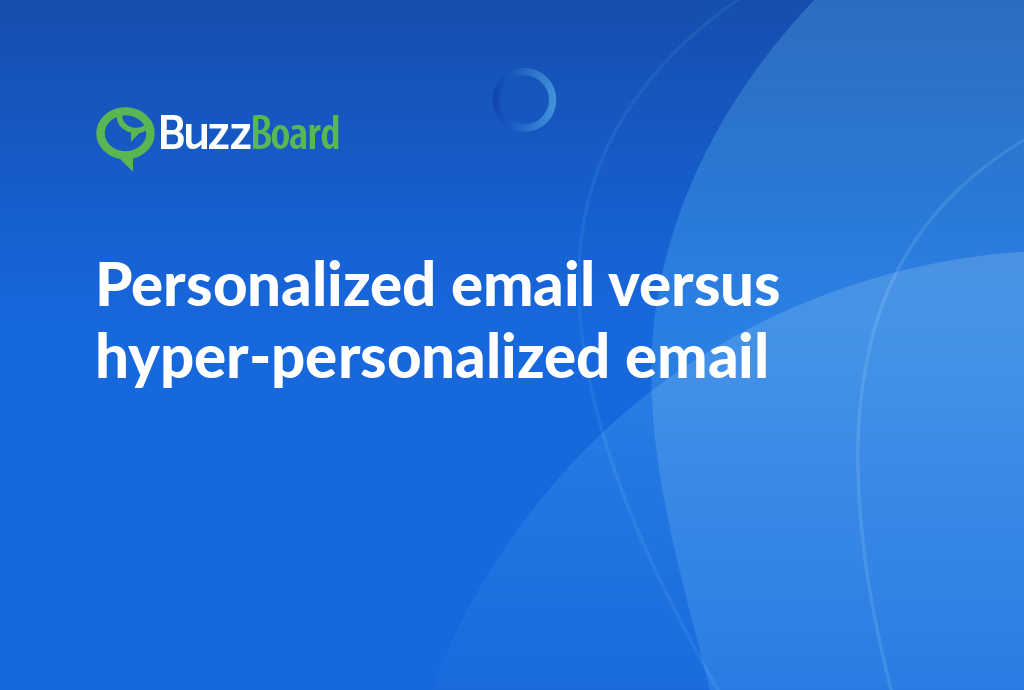Value-Based Pricing for Digital Marketing Services
Value-based pricing is a pricing strategy that focuses on the value a digital marketing service provides to a small business, rather than the time spent on the project. To price your digital marketing services for small businesses using value-based pricing, start by identifying the specific benefits your services bring to clients, such as increased website traffic or improved conversion rates. Next, calculate the value of these benefits by estimating the revenue increase or cost savings they generate. Finally, set your prices based on the value you’re providing, rather than the time spent on the project. This approach helps ensure you’re charging what your services are truly worth and can lead to more profitable and sustainable business relationships.
Introduction to Value-Based Pricing for Digital Marketing Services Offered to Small Businesses
In digital marketing, pricing your services effectively for small businesses can be complex. The concept of pricing primarily hinges on value-based pricing. This method reflects the real value you offer your client, instead of merely charging an hourly rate or a predetermined package price.
Understanding and articulating your value proposition is crucial to value-based pricing. This influences how you present your services’ worth regarding what similar industry businesses charge and the potential return on investment for the client. The retainer model, in which clients pay a fixed fee for continuous services, effectively translates this value into a tangible cost for your clients. This model provides predictability to your clients and assures your services on a continual basis.
When it comes to pricing digital marketing services for small businesses, it’s essential to strike a balance between accuracy, value, and flexibility. While hourly rates and package pricing can still be effective for short-term or distinct projects, it’s crucial to ensure that these methods demonstrate the value proposition of your work.
In other words, simply listing a price without explaining the benefits and value that your services bring to the table is unlikely to resonate with small business owners. Instead, you need to be able to clearly articulate the value that your digital marketing services will bring to their business, such as increased website traffic, improved brand awareness, or enhanced customer engagement.
To achieve this, you should focus on developing a well-defined value proposition that highlights the unique benefits and results that your services can deliver. This will enable you to demonstrate the worth of your services and justify your pricing structure.
In addition to a strong value proposition, it’s also important to consider the type of pricing model that will work best for your small business clients. While hourly rates and package pricing can be effective for short-term or distinct projects, a retainer model may be more suitable for ongoing services that require regular maintenance and updates.
A retainer model, for example, can provide a predictable and stable income stream for your business, while also giving clients the flexibility to adjust their marketing strategy as needed. This can be particularly beneficial for small businesses that require ongoing support and guidance to achieve their marketing goals.
Ultimately, accurate pricing of digital marketing services for small businesses requires a calculated valuation of the service’s worth, a well-defined value proposition, and flexible pricing models that cater to the unique needs and goals of each client. By taking a thoughtful and strategic approach to pricing, you can build trust and credibility with your clients, while also ensuring that your business is profitable and sustainable in the long term.
Exploring the Concept of Hourly Rates in the Context of Value-Based Pricing
When it comes to pricing digital marketing services for small entities, there are two primary models to consider: hourly charges and value-based pricing structures. Each model has its unique advantages and disadvantages, which can significantly impact your value proposition and ultimately, your business’s profitability. To deliver effective services and maintain a profitable business, it is essential to have a thorough understanding of each model’s dynamics.
Hourly charges offer a straightforward approach, where clients are billed for each hour of work performed. This model provides clarity and transparency, which can alleviate budgeting concerns for clients. However, hourly rates often fail to accurately reflect the value of the completed work, particularly in the digital marketing arena where the results often exceed the time invested. For instance, a successful SEO campaign may generate significant returns on investment, far surpassing the initial cost. In such cases, hourly rates may not accurately capture the value created.
On the other hand, value-based pricing requires a deep understanding of your client’s expectations and the value your digital marketing services provide. This model necessitates showcasing the tangible benefits and returns on investment that your services can deliver. By doing so, you can demonstrate the long-term value of your services and justify higher prices. For example, a digital marketing agency may charge a premium for its SEO services if it can demonstrate a consistent track record of improving clients’ search engine rankings and driving more qualified leads.
For many digital marketing agencies, a middle ground can be achieved through package pricing or the retainer model. Package pricing offers a set of services at a predetermined charge, providing the clarity of hourly rates while also including value. This approach can be particularly effective for small-scale businesses that require a specific set of services, such as social media management or content creation. The retainer model, where clients pay a monthly fee for continuous services, fosters long-term relationships and ensures steady revenue. This approach can be beneficial for clients who require ongoing support and guidance, such as website maintenance or email marketing campaigns.
It is essential to note that pricing strategies should not be static. They must evolve with market trends, business expansion, and changes to your value proposition. As your business grows and your services evolve, your pricing strategy should adapt to reflect the increased value you provide. Failing to do so can result in undervaluing your services and ultimately, impacting your business’s profitability.
Pricing digital marketing services for small entities requires a thoughtful approach that considers the unique needs and expectations of each client. By understanding the advantages and disadvantages of hourly charges and value-based pricing structures, you can develop a pricing strategy that accurately reflects the value you provide and drives business growth. Whether you choose to adopt a package pricing or retainer model, it is essential to regularly review and adjust your pricing strategy to ensure it remains aligned with your business goals and value proposition.
Understanding Package Pricing as a Feasible Option for Small Businesses
Understanding package pricing is a crucial aspect of sales for digital marketing agencies that cater to the unique needs of small and local businesses. Navigating the pricing of digital marketing services for these businesses presents its own set of challenges and opportunities, and being conversant with these options can make a significant difference in the success of your sales efforts.
One of the most common pricing strategies for small businesses is package pricing, which is a fixed pricing strategy that bundles several services into a comprehensive package at a set price. This model delivers predictability for both the agency and the client, fostering accurate budgeting and efficient cash flow management. For instance, a package might include a set number of hours of social media management, website maintenance, and SEO services, all for a fixed monthly fee. This predictability can be particularly appealing to small businesses that have limited budgets and need to plan their expenses carefully.
On the other hand, hourly rates can lead to fluctuating billable hours monthly, breeding unpredictability in the client’s budget. This can be a major concern for small businesses that rely on a steady cash flow to operate their daily activities. With hourly rates, clients may be faced with unexpected bills at the end of the month, which can be difficult to manage.
Another pricing strategy that is worth considering is the retainer model. In this model, a client pays a recurring fee, usually monthly, for a specific set of services. This model usually functions well when a long-term business relationship is present, offering a steady revenue stream and enabling the agency to plan resources effectively for optimal service delivery. For example, a client might pay a monthly retainer fee for a set number of hours of content creation, social media management, and email marketing services. This model can provide a sense of stability and security for both the agency and the client.
The key to success in selling digital marketing services to small businesses lies in understanding the value proposition of each pricing model. Every pricing model provides its own unique value, and the core task is identifying which value proposition resonates most with your small business clients. It could be the predictability of package pricing, the steadiness of a retainer model, or the flexibility of hourly rates.
As a salesperson, comprehending each pricing model’s unique benefits can support you in effectively selling digital marketing services to your small business clients. By understanding the strengths and weaknesses of each model, you can tailor your sales approach to meet the specific needs and preferences of your clients. For instance, if a client is looking for a predictable and stable solution, you might recommend a package pricing model. On the other hand, if a client is looking for flexibility and customization, you might recommend an hourly rate model.
To equip yourself with the knowledge needed to serve your clients optimally, it’s essential to delve into each pricing model and explore its unique benefits and drawbacks. This will enable you to have informed conversations with your clients, address their concerns and needs, and ultimately close more deals. By being conversant with the different pricing models and their value propositions, you can differentiate yourself from competitors and establish your agency as a trusted partner for small and local businesses.
Understanding package pricing is a crucial aspect of sales for digital marketing agencies that cater to the unique needs of small and local businesses. By comprehending each pricing model’s unique benefits and drawbacks, you can effectively sell digital marketing services to your clients and establish your agency as a trusted partner for their marketing needs.
How Does the Retainer Model Fit into Pricing Digital Marketing Services
As a salesperson at a digital marketing agency, understanding your pricing structure is crucial to achieving success. One pricing model that is worth considering is the retainer model, which has gained popularity among small and local businesses. In this model, clients engage your agency’s services over an extended period, typically on a monthly basis, rather than paying for services on an ‘as-needed’ basis (hourly rates) or purchasing a general service bundle (package pricing).
The retainer model offers several benefits for small businesses. It allows them to have a dedicated team focused on their marketing commitments, freeing them to concentrate on their core business. This model also enables your agency to deliver customized, ongoing services tailored to best serve the client’s business needs and growth. A thorough digital marketing strategy can be developed, which adapts to the client’s evolving needs and goals.
To succeed with a retainer model, it is essential to consistently deliver measurable results. Instead of focusing on immediate, ephemeral results, the emphasis should be on long-term value and sustained growth. This requires aligning your pricing structure with business outcomes, highlighting the core relevance of your services. By doing so, you can demonstrate the value you provide to clients and build trust.
Transparency and a commitment to sharing knowledge are also essential in building trust and sustaining a mutually beneficial relationship with clients. This can be achieved by providing regular progress reports, sharing insights and data, and being open to feedback and suggestions. By doing so, you can ensure that clients are informed and engaged throughout the process, which can lead to a stronger partnership.
When selling digital marketing services, it is essential to focus on creating a win-win scenario for both your agency and your clients. The retainer model can be a key component in achieving this equilibrium. By providing customized services, measurable results, and transparency, you can demonstrate the value you provide and build trust with clients.
In addition, the retainer model can help to reduce the risk of churn and increase client retention. By having a dedicated team focused on a client’s marketing commitments, you can build a deeper understanding of their business and develop a stronger relationship. This can lead to increased loyalty and a longer-term partnership.
The retainer model can be an effective pricing strategy for digital marketing services, particularly for small and local businesses. By providing customized services, measurable results, and transparency, you can demonstrate the value you provide and build trust with clients. To succeed, it is essential to focus on creating a win-win scenario for both your agency and your clients, and to consistently deliver measurable results. By doing so, you can achieve long-term success and build a strong reputation in the industry.
Elaborating on the Value Proposition of Value-Based Pricing for Digital Marketing Services for Small Businesses
Value-based pricing is a revolutionary approach to pricing digital marketing services for small businesses, shifting the focus from the cost of production to the value provided to customers. This innovative method assesses the tangible results and benefits that customers derive from the services and directly ties them to a corresponding price. By doing so, value-based pricing ensures that small businesses only pay for the services that deliver measurable value, rather than simply paying for the time invested or the services included in a package.
In contrast to hourly rates, which solely focus on the time spent on a project, value-based pricing takes a more holistic approach by considering the actual value created for the customer. This approach recognizes that the value of a service is not solely determined by the time invested, but rather by the tangible benefits and results achieved. For instance, a digital marketing agency may spend 10 hours creating a social media campaign, but the true value lies in the increased brand awareness, website traffic, and lead generation that the campaign generates.
Similarly, package pricing, which bundles a set of services together, may not always provide the best value for the customer. A package may include services that are not directly relevant to the customer’s needs, resulting in wasted resources and unnecessary expenses. Value-based pricing, on the other hand, allows businesses to customize their services to meet their unique needs and goals, ensuring that they only pay for the services that deliver tangible value.
The retainer pricing model, which involves a fixed fee for a set period, can also be limiting for small businesses. While it provides a sense of stability and predictability, it may not allow businesses to adapt to changing circumstances or expand their service requirements as they grow. Value-based pricing, however, offers the flexibility to adjust services and pricing as needed, allowing businesses to pursue additional services and opportunities as they arise.
By adopting a value-based pricing approach, digital marketing services are positioned as an investment rather than an expense. Small and local businesses can enjoy cost efficiency, as they only pay for the services that deliver tangible results and benefits. This approach also encourages businesses to think strategically about their marketing efforts, focusing on the services that drive the greatest value and ROI. Ultimately, value-based pricing empowers small businesses to make informed decisions about their marketing investments, ensuring that they achieve their goals and objectives in a cost-effective and efficient manner.
Conclusion
Value-based pricing is a game-changer for digital marketing agencies looking to price their services effectively for small businesses. By focusing on the value that their services bring to clients, rather than the time spent on a project, agencies can create a pricing strategy that is both profitable and attractive to clients. The article provides a step-by-step guide on how to implement value-based pricing, from identifying the value proposition to calculating the pricing model.
By following these steps, agencies can create a pricing strategy that is tailored to their unique strengths and the needs of their small business clients. Additionally, the article highlights the importance of communicating the value of services to clients, and provides tips on how to do so effectively. By adopting a value-based pricing approach, digital marketing agencies can differentiate themselves from competitors, increase their revenue, and build stronger relationships with their clients.









